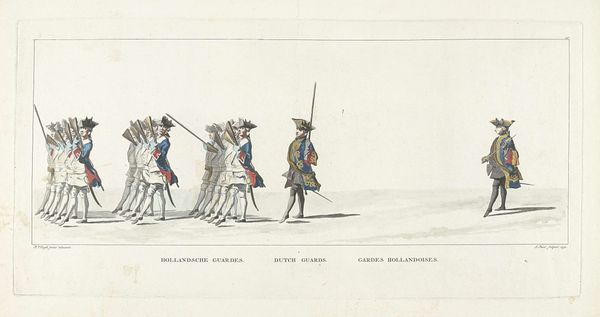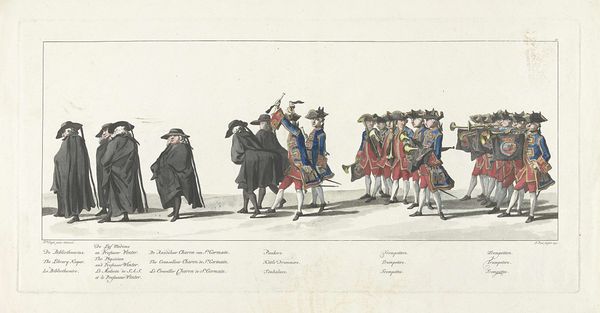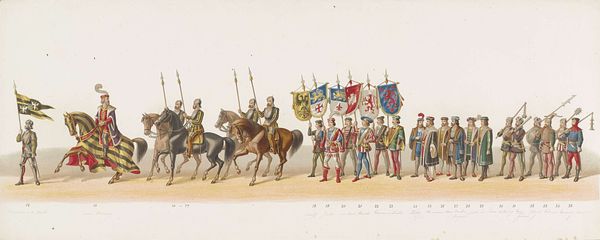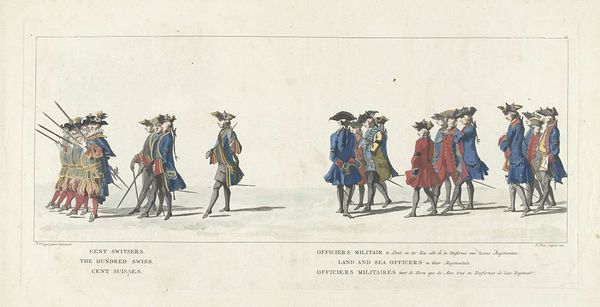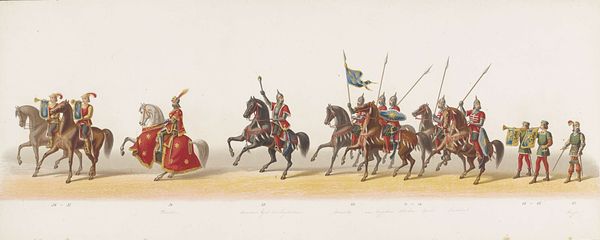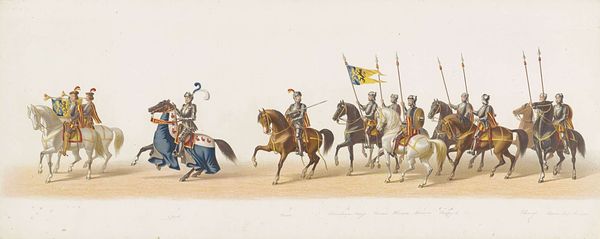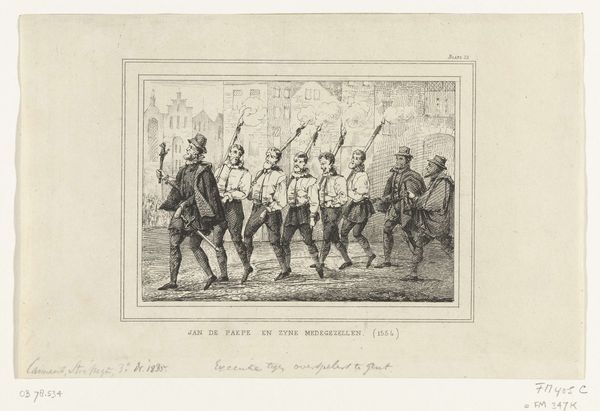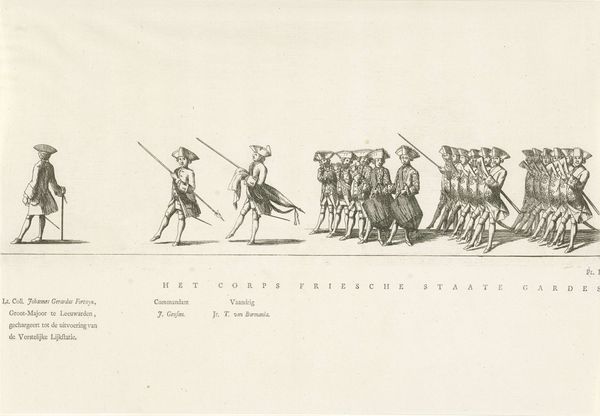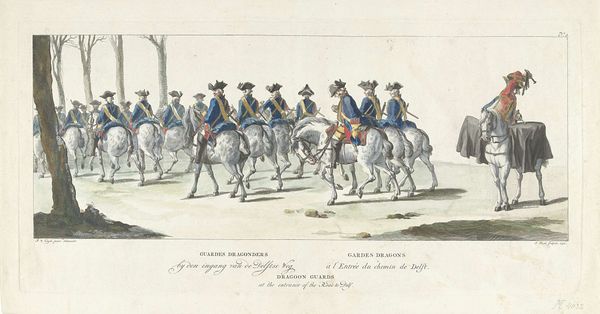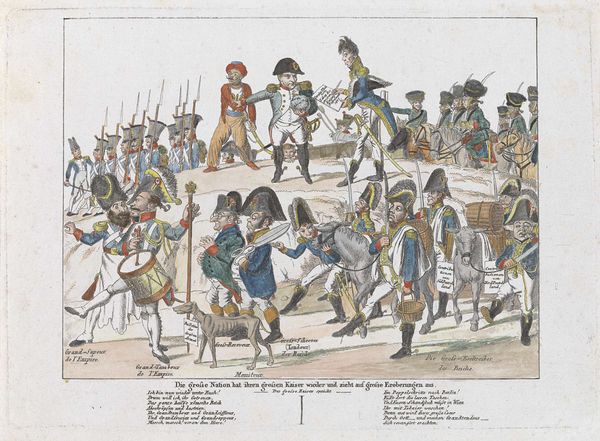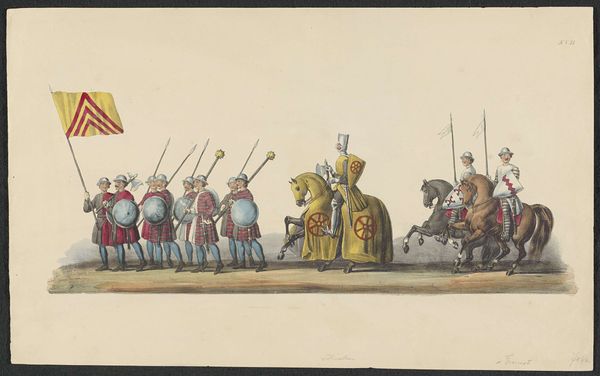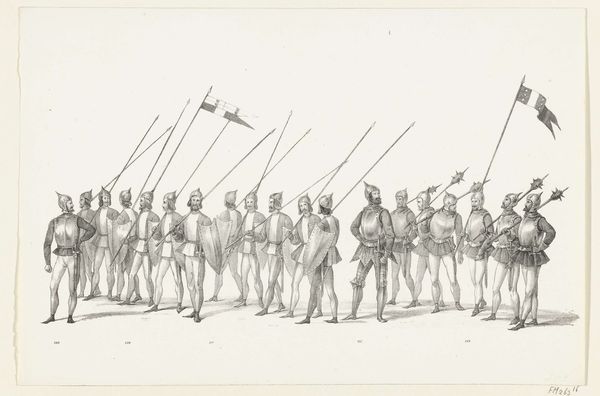
drawing, print, engraving
#
drawing
#
baroque
# print
#
15_18th-century
#
history-painting
#
engraving
Dimensions: height 270 mm, width 560 mm
Copyright: Rijks Museum: Open Domain
Curator: Here we have "Lijkstatie van Willem IV, 1752, plaat 8," a print made by Jan Punt. Editor: What strikes me immediately is the almost theatrical arrangement of these guards, with their flamboyant uniforms marching across what feels like an empty stage. It is interesting how clothing serves as an indicator of hierarchy. Curator: It is rather stage-like, isn't it? Punt made a series of these prints documenting the funeral procession of William IV. Prints like these served as both historical records and propaganda, emphasizing the pomp and power of the ruling class. This plate specifically showcases different formations of guards, labeled in Dutch and French. The details captured really underscore the hierarchical nature of the era's military and political structures. Editor: Absolutely. Looking closer, it is obvious how this display of power aims at solidifying the monarchy’s presence, especially within the context of evolving social dynamics. I notice the way each grouping is so precisely rendered – the variation in uniform styles between what is described as the "Dutch guards" and the other formations indicates careful attention was given to symbolic representation. What statement might they be trying to make? Curator: I would argue it’s a demonstration of martial order intended to legitimize authority, reminding the public of the reach and control of the Dutch leadership even in a moment of transition with the monarch's passing. The Baroque style, despite being in print form, imbues the scene with an air of grandeur. Editor: This is something I find incredibly complex - turning grief into statecraft. While death certainly equalizes, this visual narrative carefully emphasizes established hierarchies. It prompts you to consider what socio-political messages are intentionally embedded into collective memory. Curator: Exactly, the choice to commemorate the transition with such focus on pageantry and protocol sends a clear message about maintaining the social order. These kinds of illustrations also circulated widely, becoming cultural touchstones that shaped perceptions of power and nationhood. Editor: In many ways, Jan Punt's piece transcends simply recording a historical moment - rather it exemplifies how art intertwines with political agency to perpetuate a complex framework within the eighteenth century's historical tableau. Curator: It is definitely a reminder that even seemingly straightforward historical documentation can serve powerful ideological purposes.
Comments
No comments
Be the first to comment and join the conversation on the ultimate creative platform.
